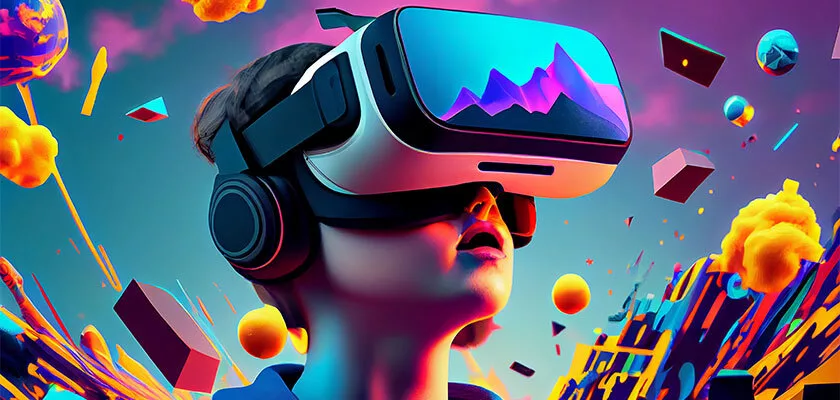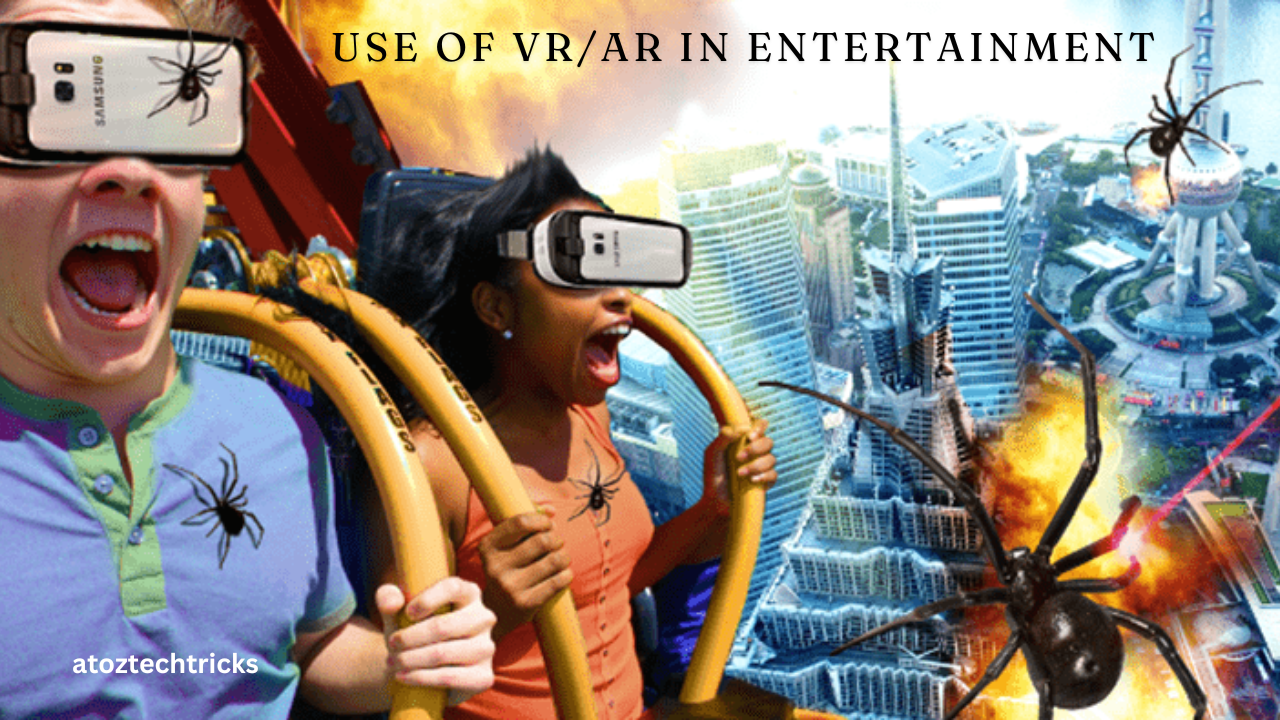The Use of VR/AR in Entertainment: Transforming the Industry
Virtual Reality (VR) and Augmented Reality (AR) have rapidly evolved from niche technologies into mainstream entertainment tools. Their ability to immerse users in digital worlds or overlay digital information onto the real world has revolutionized various aspects of entertainment, including gaming, movies, live performances, and interactive experiences. This article explores how VR and AR are transforming the entertainment industry, examining their current applications, potential future developments, and the impact they have on audience engagement.
Understanding VR and AR
What is Virtual Reality?
Virtual Reality (VR) is a computer-generated simulation that immerses users in a fully virtual environment. Users interact with this environment through VR headsets and controllers, which track their movements and respond to their actions in real time. VR creates a sense of presence, making users feel as though they are physically inside a virtual world.
Applications in Entertainment:
- Gaming: VR games offer highly immersive experiences by placing players directly into the game’s world. Popular titles like “Beat Saber” and “Half-Life: Alyx” showcase the potential of VR in creating engaging and interactive gameplay.
- Movies: VR cinema allows viewers to experience films from unique perspectives, such as being in the middle of the action or exploring a 360-degree narrative. This format can provide a new level of engagement and immersion.
What is Augmented Reality?
Augmented Reality (AR) overlays digital information onto the real world, enhancing or altering the user’s perception of their environment. Unlike VR, which creates a completely separate digital world, AR adds digital elements to the physical world using devices like smartphones, tablets, or AR glasses.
Applications in Entertainment:
- Mobile Games: AR games like “Pokémon GO” integrate virtual elements with the real world, encouraging players to explore their surroundings to find and interact with virtual characters.
- Live Events: AR can enhance live performances by projecting additional visual effects or interactive elements that interact with the performers and audience.

The Impact of VR/AR on Gaming
Immersive Gaming Experiences
VR has significantly transformed the gaming industry by offering immersive experiences that traditional gaming setups cannot match. Players wearing VR headsets can physically move and interact with virtual environments, providing a more engaging and realistic experience.
Key Developments:
- Full-Body Tracking: Advanced VR systems use full-body tracking to capture players’ movements and incorporate them into the game. This technology enhances the sense of immersion and makes interactions with the virtual world more natural.
- Social VR: Platforms like “VRChat” and “Rec Room” allow players to interact with others in virtual spaces, creating social experiences within the VR environment. These platforms offer a range of activities, from casual meetups to collaborative gaming.
Augmented Reality Games
AR games blend the digital and physical worlds, encouraging players to interact with their real-world environment while engaging with virtual elements. This fusion creates unique gaming experiences that promote physical activity and exploration.
Popular Examples:
- “Pokémon GO”: This game revolutionized mobile gaming by integrating virtual Pokémon into the real world. Players explore their neighbourhoods to find and catch Pokémon, participate in virtual battles, and engage in community events.
- “Harry Potter: Wizards Unite”: Similar to “Pokémon GO,” this game uses AR to immerse players in the wizarding world, allowing them to interact with magical creatures and objects in their real surroundings.
Revolutionizing the Film Industry
VR Cinema
VR cinema offers a new way to experience films by immersing viewers in a 360-degree environment. Unlike traditional films that are viewed on a flat screen, VR cinema allows audiences to look around and explore the virtual space, providing a more interactive and engaging experience.
Innovative Projects:
- “The Lion King VR Experience”: This VR experience allows users to explore the world of “The Lion King” in a 360-degree environment, offering a new perspective on the film’s story and characters.
- “Gondwana”: An example of VR storytelling that takes users on a journey through a visually stunning virtual world, combining narrative elements with immersive visuals.
AR in Film and Television
AR enhances traditional film and television experiences by adding interactive elements or supplementary content. For example, AR apps can provide additional information about characters, scenes, or settings when users point their devices at specific objects or locations.
Examples:
- AR Enhancements for TV Shows: Some shows use AR to provide viewers with interactive content related to the episode they are watching. This can include behind-the-scenes footage, character profiles, or interactive quizzes.
- Promotional Campaigns: Films and TV shows use AR to engage audiences with interactive marketing campaigns, such as virtual posters or augmented trailers that offer additional content or experiences.
Enhancing Live Performances
AR in Concerts and Theater
AR can add a new layer of excitement to live performances by integrating digital effects and interactive elements. This technology allows performers to interact with virtual elements, creating a visually dynamic and engaging experience for the audience.
Examples:
- Concerts: Artists like Björk and Katy Perry have used AR to enhance their live performances, incorporating virtual visuals and interactive elements that respond to the music and audience movements.
- Theatre: AR can transform stage productions by adding virtual sets, props, and characters that interact with the live actors. This fusion of live-action and digital effects can create unique and immersive theatre experiences.
Interactive Experiences
AR can also create interactive experiences for audiences before, during, and after live events. This includes interactive event apps, AR-based scavenger hunts, and virtual meet-and-greets with performers.
Examples:
- AR Event Apps: These apps provide additional content and interactive features for attendees, such as virtual maps, event schedules, and interactive exhibits.
- Virtual Meet-and-Greets: AR can facilitate virtual interactions between fans and performers, allowing fans to have personalized experiences with their favourite celebrities.

The Future of VR/AR in Entertainment
Advancements in Technology
As VR and AR technologies continue to evolve, they are expected to offer even more immersive and interactive experiences. Advancements in hardware, software, and content creation will drive the growth of VR and AR in the entertainment industry.
Emerging Technologies:
- Haptic Feedback: Advances in haptic technology will enable users to feel physical sensations in VR environments, enhancing the realism and immersion of virtual experiences.
- Eye Tracking: Eye-tracking technology will improve VR interactions by allowing systems to respond to users’ gaze, enabling more intuitive and natural interactions with virtual environments.
Integration with Other Technologies
VR and AR will increasingly integrate with other emerging technologies, such as artificial intelligence (AI) and 5G connectivity, to create even more dynamic and engaging entertainment experiences.
Potential Integrations:
- AI-Driven Content: AI can generate dynamic and personalized content for VR and AR experiences, tailoring interactions and narratives to individual users’ preferences and behaviours.
- 5G Connectivity: The high-speed and low-latency capabilities of 5G will enhance VR and AR experiences by enabling real-time data transfer and seamless interactions in virtual environments.
Expanding Applications
The applications of VR and AR in entertainment are expected to expand beyond gaming, film, and live performances. New opportunities will arise in areas such as virtual tourism, interactive storytelling, and immersive education.
Future Trends:
- Virtual Tourism: VR will allow users to explore virtual versions of famous landmarks, historical sites, and exotic destinations, providing immersive travel experiences without leaving home.
- Interactive Storytelling: AR and VR will enable new forms of interactive storytelling, where users can influence the narrative and interact with characters in real time.
The use of VR and AR in entertainment is transforming the industry by offering new ways to engage and interact with content. From immersive gaming experiences to innovative film formats and enhanced live performances, VR and AR are reshaping how audiences experience entertainment. As technology continues to advance, the potential for VR and AR to create even more immersive and interactive experiences is vast. The future of entertainment promises to be increasingly dynamic and engaging, driven by the continued evolution of VR and AR technologies.
With the rapid development of these technologies and their integration into various aspects of entertainment, VR and AR are set to redefine how we experience and enjoy our favourite forms of media. Whether through virtual worlds, augmented experiences, or interactive storytelling, VR and AR are at the forefront of the entertainment industry’s evolution, offering exciting possibilities for both creators and audiences.




Post Comment